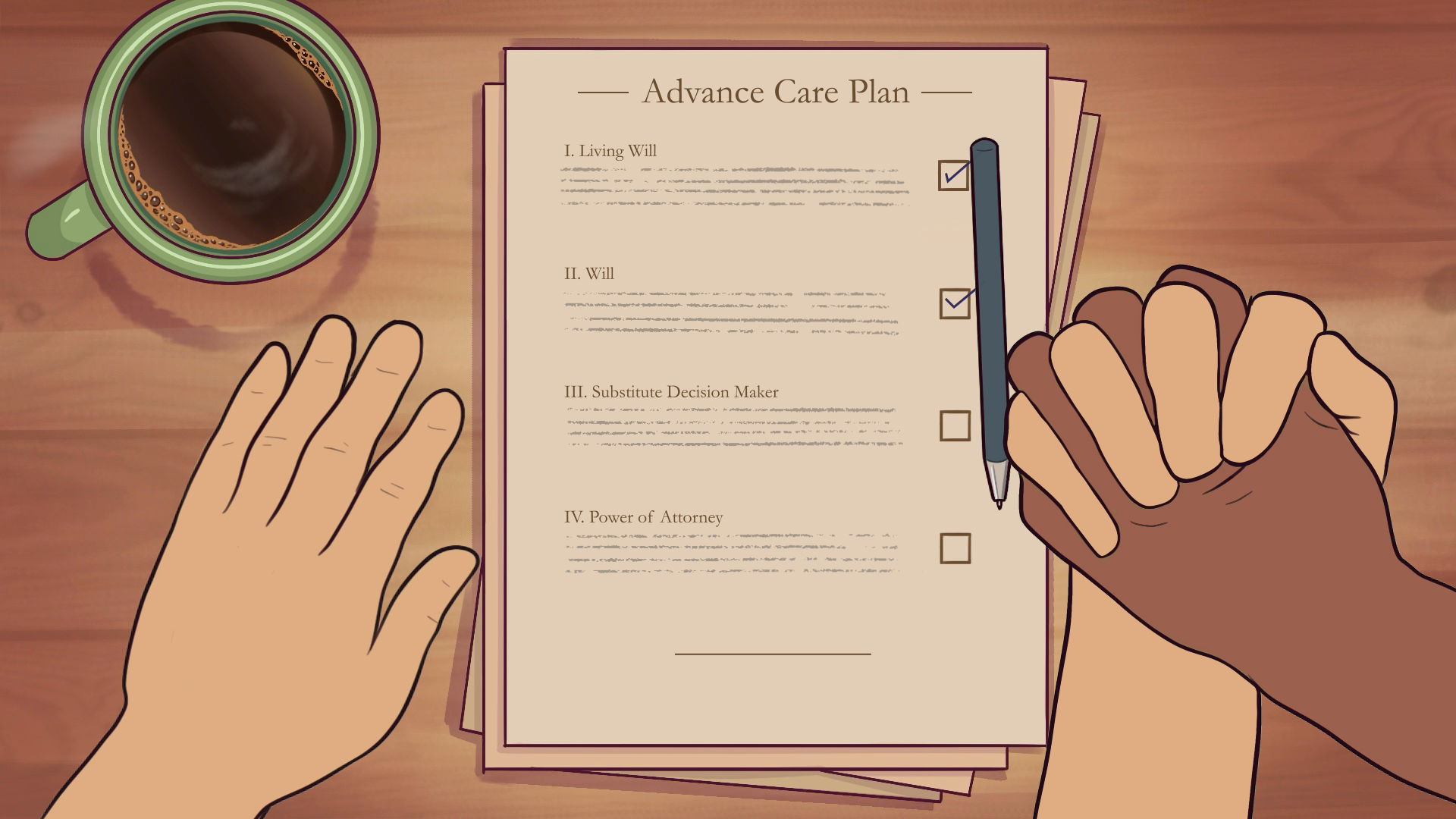
Speaking from the Heart
Speaking from the Heart:
An audience-informed animation for navigating palliative care and advanced heart failure
My Master’s Research at University of Toronto was a 2-part animation—done the old-fashioned way.
The animation discusses managing heart failure symptoms at home and transitioning from palliative to advanced care with 7 minutes of hand-drawn and compositing animation at 24 frames per second.
The initiative received a Vesalius Trust Research Grant Award. Content guidance and financial support was generously provided by the Ted Rogers Center for Heart Research and the University Health Network in Toronto, ON.
Project Concept
Heart failure is a complex, chronic, and incurable condition, but medical therapies, devices, surgical interventions, and lifestyle changes can extend one’s life and improve its quality. Nonetheless, patients with advanced heart failure inevitably face complex decisions regarding end-of-life care. They require support from their health care team, family, friends, and other caregivers. This transition is challenging for everyone involved.
Patients and caregivers require better communication about disease progression, symptom management, and coping strategies, but health professionals often struggle to initiate palliative care conversations. In addition to personalized conversations with healthcare providers, online educational resources help patients (and caregivers) understand their illness and care trajectories. This project seeks to engage people experiencing heart failure in co-creating mixed-media animation to educate others like them about palliative care. The production process will incorporate their feedback about content, visual style, and clarity through individual interviews and follow-up focus group discussions during the development and production cycle.
Palliative care is a sensitive topic. People belonging to various cultures, ethnicities, and economic backgrounds may approach end-of-life decisions in vastly different ways. Current resources prioritize specific attitudes about end-of-life care or underestimate the conversation’s emotional impact.
This resource bridges communication gaps between patients, families, and healthcare providers while examining bio-communicators' approach to emotionally charged subject matter.
Research Component
Over the course of 3 months, I interviewed 4 patient volunteers from TRANSFORM HF and 1 hospice art therapist who operates in the province of Ontario. I spoke with people living with heart failure and their caregivers about their experience getting diagnosed, navigating symptoms, and entering palliative care. I distilled their insight, gathered from hours of conversation, into two 3-minute scripts.
I also quizzed participants on their visual preferences to develop a style of animation unique to their tastes. View the results:
The Animation
In accordance with the stylistic survey results, I animated the old-fashioned way; scenes were drawn frame-by-frame, with limited digital assistance.
For accessibility and time’s sake, I chose to use Procreate Dreams for iOS as my animation software. At the time of production, this application was merely months old, and lacked a lot of customary digital comforts… There was no select tool, no lasso tool, limited undo slots, and no automatic line/shape correction. The program is essentially a peg bar for the iPad. I had to learn to animate, from scratch, like the old masters of the 1920s and 30s.
Preproduction took several months in order to truly tailor the content for its audience. Storyboards and scripts went through 10 different iterations. I read Richard Williams’s The Animator’s Survival Kit cover to cover and got started. My production timeline was less than 3 months.
It was a lot of trial and error—textbooks can’t teach you everything. Each hand=drawn frame went through 5 iterations: time chart and general shapes, sketch, refine, ink, and color. At 24fps, this adds up to a lot of drawings! Compositing and video editing were done in Adobe After Effects.
.
Character style guide
Storyboard frame with walk timing chart
Storyboard frame sketch
Onion skin WIP with Procreate Dreams UI visible
Progress Work
The hardest scene in the project was the dog stair cycle. The character had to (a.) walk up stairs convincingly, (b.) transition into a straight walk, and (c.) turn around completely.
The 5 iterations for one frame
Blocking out character movement
All the drawings that go into 1 step!

















